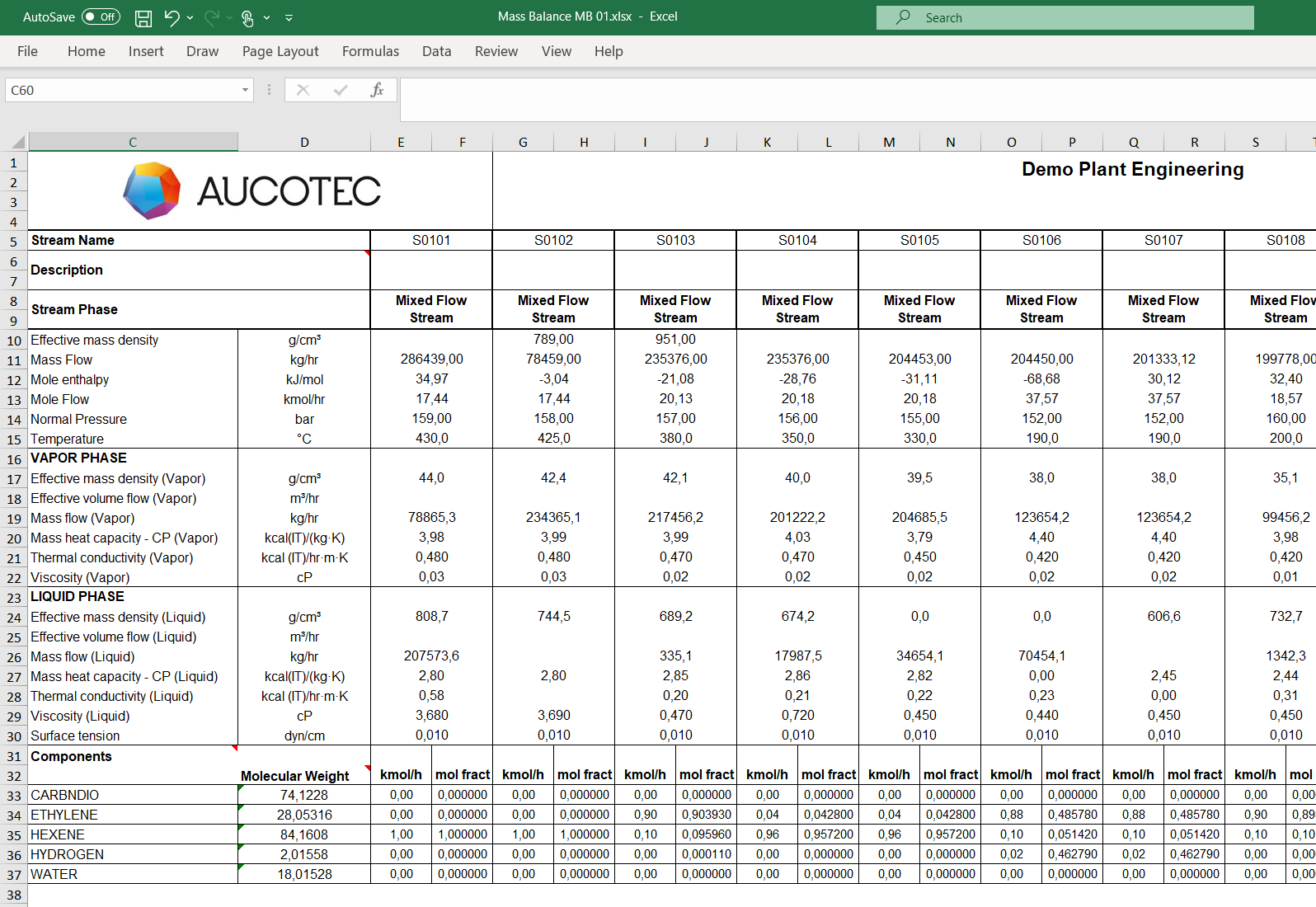Do you also like a view of a wide panorama? From an Alpine peak or cruise liner? What about the mountains of documents and floods of data in everyday plant design? AUCOTEC offers the perfect "viewing platform" for this exact scenario. With Asset 360, engineering experts automatically obtain an all-round overview of all their devices, sub-systems and other assets.
Decision-making basis
This includes all accessories, connections, flow media, values, operating modes and substructures. One click suffices, and AUCOTEC's cooperation platform Engineering Base (EB) automatically enters all information into the necessary datasheets. Without EB, laborious manual data transmission from various discipline-specific tools and other data sources is usually commonplace. However, datasheets are indispensable as one of the most important means of communication between EPCs, their subcontractors and clients. This is because they document, for example, calculation results relating to the load conditions of a process engineering reactor and serve as the basis for decision-making on its final design, ordering and production as well as for informing suppliers and for obtaining releases. Despite the two basic standards API for process engineering datasheets and ISA in the instrumentation sector, there is still an enormous variety of layouts.
Who has time?
In particular, EPCs with global clients and suppliers must be able to take into account all conceivable units, languages and design specifications in their datasheets. One customer expects the equipment table in the centre, another on the left margin; one wants it in Russian, while the next customer wants it with US units of measurement. This applies both to datasheets that "only" document one device including all links and attributes, as well as for different simulation scenarios or operating conditions of certain assets or entire plant areas. That easily amounts to 100 sheets with a number of tables and graphics. Who has time to enter this data? Who has the system knowledge with respect to the individual special tools? Who can check this data? The work involved and potential for errors are enormous.
Many templates, one source

Automatically generated data sheet from a heat & material balance calculation: This way EB saves manual work and transmission errors
EB solves these challenges with Asset 360. These are Excel-based datasheets that create an all-round view of assets such as devices and sub-systems. Since EB works in an object-oriented manner, combining the data of all core disciplines of engineering, as well as that of external systems such as simulation tools, in its central data model and mapping all links and logics to and between the objects, Asset 360 can easily "extract" the required information from this single source of truth. The datasheet is thus another representation of the object and its accessories. This procedure would be impossible when working with a chain of individual special tools per discipline.
Furthermore, Asset 360 provides highly flexible configuration options for its datasheets. Thus, an EPC can create a wide variety of templates according to the requirements of its customers. The respective format of the sheets is also based on the required standards, for example, the process-engineering-relevant API standards or ISA standards that instrumentation engineers use. The language can be defined and changed at any time simply by clicking on it. This results in a "live", high-performance Excel sheet that is fed EB data and always knows exactly where specific data belongs in the sheet, regardless of how the layout is configured. The sheets also allow revisions to be made. This means that it is easy to identify where something has been changed when customers or suppliers send the sheets back to the engineering team.
Future included
The editing of the Asset 360 datasheets is strongly based on Excel. There are good reasons for this, as almost everyone is familiar with it and can thus easily handle Asset 360 sheets in no time.
However, the current Asset 360 is only the starting point of a path that leads to much more. Thus, it is planned to enable engineers to make changes in the datasheet that will be directly reflected in EB's model. This will make Asset 360 a user interface and, at the same time, the ultimate "intermediary" between EPCs, suppliers and operators. With "Reports 360", additional automatically created, comprehensive object lists for a (sub) system are planned, as well as a link to EB Mobile View. Furthermore, it will be possible to send the datasheets to third parties whose corrections will then be easily traceable via change management and tracking of the history, even if they do not have EB. Thus, far more project participants can benefit from the new, automatically generated all-round view of the entire panorama of projects.


